An Assessment of Airport Sustainability, Part 2—Energy Management at Copenhagen Airport
Abstract
:1. Introduction
2. Background
2.1. Airport Energy Management
2.2. Key Airport Stakeholder Energy Requirements
2.3. Airport Energy Sources
2.4. Airport Energy Emissions
3. Research Method
- Phase 1: This phase involved planning the types and required documentation and their availability;
- Phase 2: The data collection involved gathering the documents and developing and implementing a scheme for the document management;
- Phase 3: Documents were reviewed to assess their authenticity and credibility and to identify any potential bias;
- Phase 4: The content of the collected documents was interrogated, and the key themes, data, and issues were identified;
- Phase 5: This phase involved the reflection and refinement to identify and difficulties associated with the documents, reviewing sources, as well as exploring the documents content; and
- Phase 6: The analysis of the data was completed in this final phase of the study [39] (p. 179).
4. Case Study
4.1. A Brief Overview of Copenhagen Airport
4.2. Copenhagen Airport Enironmental and Energy Policy and Regulatory Framework
5. Energy Consumption and Gas Emissions
5.1. Copenhagen Airport Energy Sources and Consumption
5.2. CO2 Emissions Arising from Energy Consumption at Copenhagen Airport
6. Copenhagen Airport Sustainable Energy Initiatives
6.1. Aircraft Efficiency Stands
6.2. Airport Ventilation Systems
6.3. Energy Initiatives Targeted at Copenhagen Airport’s Tenants
6.4. Installation of Solar Panel Systems
6.5. Light-Emitting Diodes (LEDs)
6.6. Monitoring of Energy Consumption
6.7. Sensor Controls on Travelators and Escalators
6.8. Use of Groundwater for Cooling at Copenhagen Airport
6.9. Use of Groundwater for Cooling Main Server Room at Copenhagen Airport
6.10. Voltage Regulation Optimization
6.11. Copenhagen Airport Annual Energy Savings
6.12. Opportunities for Additional Energy Savings at Copenhagen Airport
7. Conclusions
- Aircraft efficiency stands;
- Optimization of the energy consumption for the airport’s ventilation systems;
- Energy saving initiatives targeted at the airport’s tenants and concessionaires;
- Installation of a solar photovoltaic (PV) system;
- Widespread deployment of light emitting diode (LED) in both the landside and airside precincts;
- Careful and continuous monitoring of airport energy consumption;
- Sensor controls on travelators and escalators in the airport terminal buildings;
- Use of the state of the art cooling and heating systems, such as the Aquifer Thermal Energy Storage (ATES) (groundwater cooling);
- Use of groundwater for cooling the airport’s main server room; and
- Voltage regulation optimization.
Author Contributions
Acknowledgments
Conflicts of Interest
References
- Monsalud, A.; Ho, D.; Rakas, J. Greenhouse gas emissions mitigation strategies within the airport sustainability evaluation process. Sustain. Cities Soc. 2014, 14, 414–424. [Google Scholar] [CrossRef]
- Graham, A. Managing Airports: An International Perspective, 4th ed.; Routledge: Abingdon, UK, 2014. [Google Scholar]
- Vanker, S.; Enneveer, M.; Mäsak, M. Implementation of environmentally friendly measures at Tallinn Airport. Aviation 2013, 17, 14–21. [Google Scholar] [CrossRef]
- Sukumaran, S.; Sudhakar, K. Fully solar powered Raja Bhoj International Airport: A feasibility study. Resour.-Effic. Technol. 2017, 3, 309–316. [Google Scholar] [CrossRef]
- Giustozzi, F.; Toraldo, E.; Crispino, M. Recycled airport pavements for achieving environmental sustainability: An Italian case study. Resour. Conserv. Recycl. 2012, 68, 67–75. [Google Scholar] [CrossRef]
- Baxter, G.; Sabatini, R.; Wild, G. Sustainable airport energy management: A case study of Copenhagen Airport. In Proceedings of the International Symposium on Sustainable Aviation, Istanbul, Turkey, 31 May–3 June 2015. [Google Scholar]
- Doganis, R. The Airport Business; Routledge: London, UK, 1992. [Google Scholar]
- Dempsey, P.S. Airport Planning and Development Handbook: A Global Survey; McGraw-Hill: New York, NY, USA, 2000. [Google Scholar]
- Ashford, N.J.; Mumayiz, S.A.; Wright, P.H. Airport Engineering: Planning, Design, and Development of 21st Century Airports, 4th ed.; John Wiley & Sons: Hoboken, NJ, USA, 2011. [Google Scholar]
- Seyanont, A. Passengers’ perspective toward airport service quality at Suvarnabhumi International Airport. J. Soc. Transp. Traffic Stud. 2012, 3, 32–41. [Google Scholar]
- Ortega, S.; Manana, M. Characterization and analysis of energy demand patterns in airports. Energies 2017, 10, 119. [Google Scholar] [CrossRef]
- Cardona, E.; Piacentino, A.; Cardona, F. Energy saving in airports by trigeneration. Part I: Assessing economic and technical potential. Appl. Therm. Eng. 2006, 26, 1427–1436. [Google Scholar] [CrossRef]
- Kazda, T.; Caves, B.; Kamenický, M. Environmental control. In Airport Design and Operation, 3rd ed.; Kazda, A., Caves, R.E., Eds.; Emerald Group Publishing: Bingley, UK, 2015; pp. 457–500. [Google Scholar]
- Akyüz, M.K.; Altuntaş, O.; Söğüt, M.Z. Economic and environmental optimization of an airport terminal building’s wall and roof insulation. Sustainability 2017, 9, 1849. [Google Scholar] [CrossRef]
- Thomas, C.; Hooper, P. Sustainable development and environmental capacity of airports. In Airport Operations, 3rd ed.; Ashford, N.J., Stanton, H.P.M., Moore, C.A., Coutu, P., Beasley, J.R., Eds.; McGraw-Hill: New York, NY, USA, 2013; pp. 553–578. [Google Scholar]
- Janić, M. Greening Airports: Advanced Technology and Operations; Springer: London, UK, 2011. [Google Scholar]
- Rossi Dal Pozzo, F. EU Legal Framework for Safeguarding Air Passenger Rights; Springer International Publishing: Cham, Switzerland, 2015. [Google Scholar]
- Chu, S.C.K. Goal programming model for airport ground support equipment parking. In Multiple Objective and Goal Programming: Recent Developments; Trzaskalik, T., Michnik, J., Eds.; Physica: Heidelberg, Germany, 2002; pp. 235–246. [Google Scholar]
- Halpern, N.; Graham, A. Airport Marketing; Routledge: Abingdon, UK, 2013. [Google Scholar]
- Freathy, P.; O’Connell, F. Spending time, spending money: Passenger segmentation in an international airport. Int. Rev. Retail Distrib. Consum. Res. 2012, 22, 397–416. [Google Scholar] [CrossRef]
- Graham, A.; Morrell, P. Airport Finance and Investment in the Global Economy; Routledge: Abingdon, UK, 2017. [Google Scholar]
- Ortega, S.; Manana, M. Energy research in airports: A review. Energies 2016, 9, 349. [Google Scholar] [CrossRef]
- Budd, L.; Budd, T. Environmental technology and the future of flight. In Sustainable Aviation Futures; Budd, L., Griggs, S., Howarth, D., Eds.; Emerald Group Publishing: Bingley, UK, 2013; pp. 87–107. [Google Scholar]
- Barrett, S.; Devita, P.; Ho, C.; Miller, B. Energy technologies’ compatibility with airports and airspace: Guidance for aviation and energy planners. J. Airport Manag. 2014, 8, 318–326. [Google Scholar]
- Janić, M. The Sustainability of Air Transportation: A Quantitative Analysis and Assessment; Ashgate Publishing: Aldershot, UK, 2007. [Google Scholar]
- Dawes Farquhar, J. Case Study Research for Business; SAGE Publications: London, UK, 2014. [Google Scholar]
- Yin, R.K. Case Study Research: Design and Methods, 6th ed.; SAGE Publications: Thousand Oaks, CA, USA, 2017. [Google Scholar]
- Morse, J.M.; Niehaus, L. Mixed Method Design: Principles and Procedures; Routledge: Abingdon, UK, 2009. [Google Scholar]
- Schutt, R.K. Investigating the Social World: The Process and Practice of Research, 7th ed.; SAGE Publications: Thousand Oaks, CA, USA, 2012. [Google Scholar]
- Rahim, A.R.; Baksh, M.S. Case study method for new product development in engineer-to-order organisations. Work Study 2003, 52, 25–36. [Google Scholar] [CrossRef]
- Yin, R.K. Case Study Research: Design and Methods, 4th ed.; SAGE Publications: Thousand Oaks, CA, USA, 2009. [Google Scholar]
- Fasone, V.; Maggiore, P. “Non-Aviation” activities and the introduction of new thinking and ideas in the airport business: Empirical evidence from an Italian case study. J. Airl. Airport Manag. 2012, 2, 34–50. [Google Scholar]
- Andrew, D.P.S.; Pedersen, P.M.; McEvoy, C.D. Research Methods and Design in Sport Management; Human Kinetics: Champaign, IL, USA, 2011. [Google Scholar]
- Chester, L. A rėgulationist analysis of an industry sector using mixed research methods. In Handbook of Research Methods and Applications in Heterodox Economics; Lee, F.S., Cronin, B., Eds.; Edward Elgar: Cheltenham, UK, 2016; pp. 569–590. [Google Scholar]
- Myers, M.D. Qualitative Research in Business and Management; SAGE Publications: London, UK, 2013. [Google Scholar]
- Scott, J.; Marshall, G. A Dictionary of Sociology, 3rd ed.; Oxford University Press: Oxford, UK, 2009. [Google Scholar]
- Love, P. Document analysis. In Research in the College Context: Approaches and Methods; Stage, F.K., Manning, K., Eds.; Brunner-Routledge: New York, NY, USA, 2003; pp. 83–96. [Google Scholar]
- van Schoor, B. Fighting Corruption Collectively: How Successful Are Sector-Specific Coordinated Governance Initiatives in Curbing Corruption; Springer: Wiesbaden, Germany, 2017. [Google Scholar]
- O’Leary, Z. The Essential Guide to Doing Research; SAGE Publications: London, UK, 2004. [Google Scholar]
- Airports Worldwide. Copenhagen Kastrup Int Airport. Available online: http://www.airports-worldwide.com/denmark/copenhagen_kastrup_denmark.html (accessed on 18 May 2018).
- Star Alliance. Fly to 1,317 Destinations Worldwide with the Star Alliance Network. Available online: https://flights.staralliance.com/en/ (accessed on 18 May 2018).
- Copenhagen Airports A/S. Available online: https://www.linkedin.com/company/copenhagen-airports (accessed on 18 May 2018).
- Copenhagen Airports A/S. Group Annual Report: Facts & Figures 2016. Available online: https://www.cph.dk/globalassets/5.-om-cph/6.-investor/cph-annual-report-2016-uk_28mb.pdf (accessed on 9 September 2017).
- Copenhagen Airports A/S. CPH: Strong Finish to Challenging Year, Press Release 24 February 2009; Copenhagen Airports A/S: Copenhagen, Denmark, 2009. [Google Scholar]
- Copenhagen Airports A/S. Passenger Record Driving Results, Press Release 26 February. Available online: https://www.cph.dk/en/about-cph/press/news/2015/2/fy2014_uk/ (accessed on 18 May 2018).
- Copenhagen Airports A/S. Strong Growth at Copenhagen Airport, Press Release 1 March. Available online: https://www.cph.dk/en/about-cph/press/news/2017/3/strong-growth-at-copenhagen-airport/ (accessed on 9 November 2017).
- Copenhagen Airports A/S. CPH and Society 2011; Copenhagen Airports A/S: Copenhagen, Denmark, 2012. [Google Scholar]
- Copenhagen Airports A/S. CPH and Society 2012; Copenhagen Airports A/S: Copenhagen, Denmark, 2013. [Google Scholar]
- Copenhagen Airports A/S. CPH and Society 2013. Available online: http://dit.cph.dk/wp-content/uploads/2015/06/CPH-and-Society-2013_UK.pdf (accessed on 18 May 2018).
- Copenhagen Airports A/S. Legal Framework. Available online: http://dit.cph.dk/wp-content/uploads/2015/06/UK-Faktaark-a-responsible-company-Legal-framework.pdf (accessed on 18 May 2018).
- European Investment Bank. Environmental and Social Data Sheet: CPH (Copenhagen) Airport Expansion TEN-T. Available online: http://www.eib.org/infocentre/register/all/69558856.pdf (accessed on 20 March 2018).
- Copenhagen Airports A/S. Group Annual Report: Facts & Figures 2014 Copenhagen Airports. Available online: https://www.cph.dk/globalassets/5.-om-cph/investor/koncernarsrapporter/arsraporter_uk/cph_uk_ar_report_2015_03_18_final.pdf (accessed on 24 March 2018).
- Copenhagen Airports A/S. CPH and Society 2010. Available online: https://cph-prod-cdn.azureedge.net/48cd3d/globalassets/8.-om-cph/6.-investor/arsrapporter/en/cph-and-society-2010.pdf (accessed on 18 May 2018).
- Emirates Airline. Emirates Launches Daily A380 Service to Copenhagen. Available online: https://www.emirates.com/media-centre/emirates-launches-daily-a380-service-to-copenhagen (accessed on 18 May 2018).
- Budd, T. Environmental impacts and mitigation. In Air Transport Management: An International Perspective; Budd, L., Ison, S., Eds.; Routledge: Abingdon, UK, 2017; pp. 283–306. [Google Scholar]
- Kim, B.Y.; Waitz, I.A.; Vigilante, M.; Bassarab, R. Guidebook on Preparing Airport Greenhouse Gas Emissions Inventories; ACRP Report 11; Transportation Research Board: Washington, DC, USA, 2009. [Google Scholar]
- McGormley, R.W. Guidebook of Practices for Improving Environmental Performance at Small Airports; ACRP Report 43; Transportation Research Board: Washington, DC, USA, 2011. [Google Scholar]
- Ashford, N.J.; Stanton, H.P.M.; Moore, C.A.; Coutu, P.; Beasley, J.R. Airport Operations, 3rd ed.; McGraw-Hill: New York, NY, USA, 2013. [Google Scholar]
- Kazda, A.; Caves, R.E. Airport Design and Operation, 3rd ed.; Emerald Group Publishing: Bingley, UK, 2015. [Google Scholar]
- Odoni, A.R. Airports. In The Global Airline Industry, 2nd ed.; Belobaba, P., Odoni, A., Barnhart, C., Eds.; John Wiley & Sons: Chichester, UK, 2016; pp. 361–393. [Google Scholar]
- Kramer, L. Airport Revenue Diversification: A Synthesis of Airport Practice; ACRP Synthesis 19; Transportation Research Board: Washington, DC, USA, 2010. [Google Scholar]
- Budd, L.; Ison, S. Airfield design, configuration and management. In Air Transport Management: An International Perspective; Budd, L., Ison, S., Eds.; Routledge: Abingdon, UK, 2017; pp. 41–60. [Google Scholar]
- Copenhagen Airports A/S. CPH Efficiency Stands Ambition. Available online: https://www.cph.dk/en/cph-business/aviation/newsletters/cph-efficiency-stands-ambition/ (accessed on 5 February 2018).
- Copenhagen Airports A/S. Group Annual Report: Facts & Figures 2015 Copenhagen Airports. Available online: https://cph-prod-cdn.azureedge.net/48cf35/globalassets/8.-om-cph/6.-investor/arsrapporter/en/facts--figures-2015.pdf (accessed on 18 May 2018).
- Barrett, S. Ownership structures and the implications for developing airport solar projects in the USA. J. Airport Manag. 2015, 9, 248–263. [Google Scholar]
- Sukumaran, S.; Sudhakar, K. Fully solar powered airport: A case study of Cochin International airport. J. Air Transp. Manag. 2017, 62, 176–188. [Google Scholar] [CrossRef]
- Wybo, J.L. Large-scale photovoltaic systems in airports areas: Safety concerns. Renew. Sustain. Energy Rev. 2013, 21, 402–410. [Google Scholar] [CrossRef]
- Copenhagen Airports A/S. Copenhagen Airport’s Solar Power System Inaugurated, Press Release 24 September. Available online: https://www.cph.dk/en/about-cph/press/news/2014/9/copenhagen-airports-solar-power-system-inaugurated/ (accessed on 20 March 2018).
- Copenhagen Airports A/S. Better Light Control Reduces Power Consumption. Press Release; Copenhagen Airports A/S: Copenhagen, Denmark, 2009. [Google Scholar]
- Keller, M.; Burke, B. Fundamentals of Integrated Design for Sustainable Building; John Wiley & Sons: Hoboken, NJ, USA, 2009. [Google Scholar]
- Freyssinier, J.P. The long-term performance of LEDs. Int. Airport Rev. 2014, 18, 38–41. [Google Scholar]
- Copenhagen Airports A/S. CPH Environmental Report 2009; Copenhagen Airports A/S: Copenhagen, Denmark, 2010. [Google Scholar]
- Stasinopoulos, P.; Smith, M.H.; Hargroves, K.C.; Desha, C. Whole System Design: An Integrated Approach to Sustainable Engineering; Earthscan Publications: London, UK, 2009. [Google Scholar]
- Copenhagen Airports A/S. LED Light to Save Energy at Copenhagen Airport; Copenhagen Airports A/S: Copenhagen, Denmark, 2014. [Google Scholar]
- Copenhagen Airports A/S. Copenhagen Airports A/S Environmental Report 2000; Copenhagen Airports A/S: Copenhagen, Denmark, 2001. [Google Scholar]
- International Air Transport Association. Passenger Terminal Design. Available online: http://www.iata.org/whatwedo/ops-infra/air-traffic-management/Documents/passenger-terminal-design.pdf (accessed on 5 February 2018).
- Coleman, P. Shopping Environments: Evolution, Planning and Design; Architectural Press: Burlington, MA, USA, 2006. [Google Scholar]
- Copenhagen Airports A/S. ATES: Groundwater Cooling. Available online: http://dit.cph.dk/wp-content/uploads/2015/06/UK-Faktaark-a-responsible-company-ATES.pdf (accessed on 20 March 2018).
- Thomas, M.; Sheffield, J.W.; Mohan, V. Hydrogen design case studies. In Hydrogen Energy and Vehicle Systems; Grasman, S.E., Ed.; CRC Press: Boca Raton, FL, USA, 2013; pp. 273–295. [Google Scholar]
- Testa, E.; Giammusso, C.; Bruno, M.; Maggiore, P. Analysis of environmental benefits resulting from use of hydrogen technology in handling operations at airports. Clean Technol. Environ. 2014, 16, 875–890. [Google Scholar] [CrossRef]
- Airmarrell. Hydrogen Fuel Cells Could Enable Airports to Reduce Their Ground Emissions to Almost Zero. Available online: http://www.airmarrel.com/fr/hydrogen-fuel-cells-could-enable-airports-to-reduce-their-ground-emissions-to-almost-zero-2/ (accessed on 4 February 2018).
- Acar, C.; Dincer, I. Hydrogen Energy. In Comprehensive Energy Systems; Dincer, I., Ed.; Elsevier: Amsterdam, The Netherlands, 2018; pp. 563–604. [Google Scholar]
- Dincer, I.; Joshi, A.S. Solar Based Hydrogen Production Systems; Springer: New York, NY, USA, 2013. [Google Scholar]
- Fuel Cells Bulletin. Green hydrogen facility opens at Berlin airport. Fuel Cells Bull. 2014, 5, 1. [Google Scholar]
- Fuel Cells Bulletin. Hydrogen energy project planned for two Canadian airports. Fuel Cells Bull. 2009, 6, 8. [Google Scholar]
- New Kansai International Airport Company Ltd. Creating the Future with Hydrogen: Smart Airport KIX; New Kansai International Airport Company Ltd.: Osaka, Japan, 2016. [Google Scholar]
- Gegg, P.; Budd, L.; Ison, S. The market development of aviation biofuel: Drivers and constraints. J. Air. Transp. Manag. 2014, 39, 34–40. [Google Scholar] [CrossRef] [Green Version]
- Harvey, C. United Airlines Is Flying on Biofuels. Here’s Why That’s a Really Big Deal. The Washington Post. 11 March 2016. Available online: https://www.washingtonpost.com/news/energy-environment/wp/2016/03/11/united-airlines-is-flying-on-biofuels-heres-why-thats-a-really-big-deal/?utm_term=.0e8f370954c9 (accessed on 4 February 2018).
- World Economic Forum. Norway’s Airports Refuel Aircraft with Biofuels. Available online: https://www.weforum.org/agenda/2017/11/norway-airports-biofuels-avinor/ (accessed on 4 February 2018).
- Copenhagen Airports A/S. Aviation Sector in the Nordic Region Together with Airbus and Boeing Join Forces for Sustainable Jet Fuel. Available online: https://www.svensktflyg.se/2013/11/aviation-sector-in-the-nordic-region-together-with-airbus-and-boeing-join-forces-for-sustainable-jet-fuel/ (accessed on 18 May 2018).
- Horonjeff, R.; McKelvey, F.X.; Sproule, W.J.; Young, S. Planning & Design of Airports, 5th ed.; McGraw-Hill: New York, NY, USA, 2010. [Google Scholar]
- Airside International. Getting it right: Aircraft power on the stand. Airside Int. 2012, 19, 23–25. [Google Scholar]
- Copenhagen Airports A/S. Use of APU. Available online: http://dit.cph.dk/wp-content/uploads/2015/07/EN-4-Noise-Use-of-APUs.pdf (accessed on 18 May 2018).
- Larminie, J.; Lowry, J. Electric Vehicle Technology Explained, 2nd ed.; John Wiley & Sons: Chichester, UK, 2012. [Google Scholar]
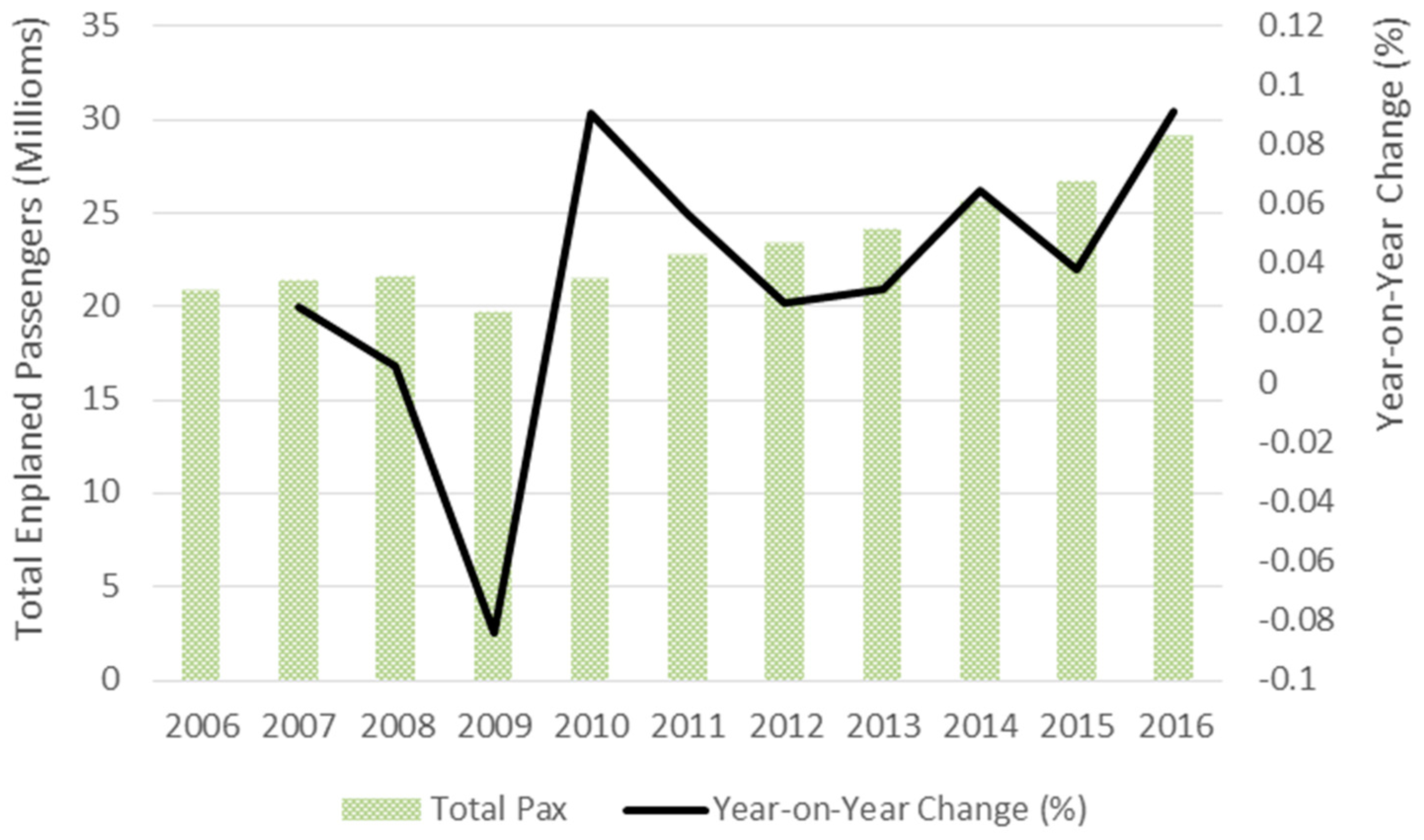

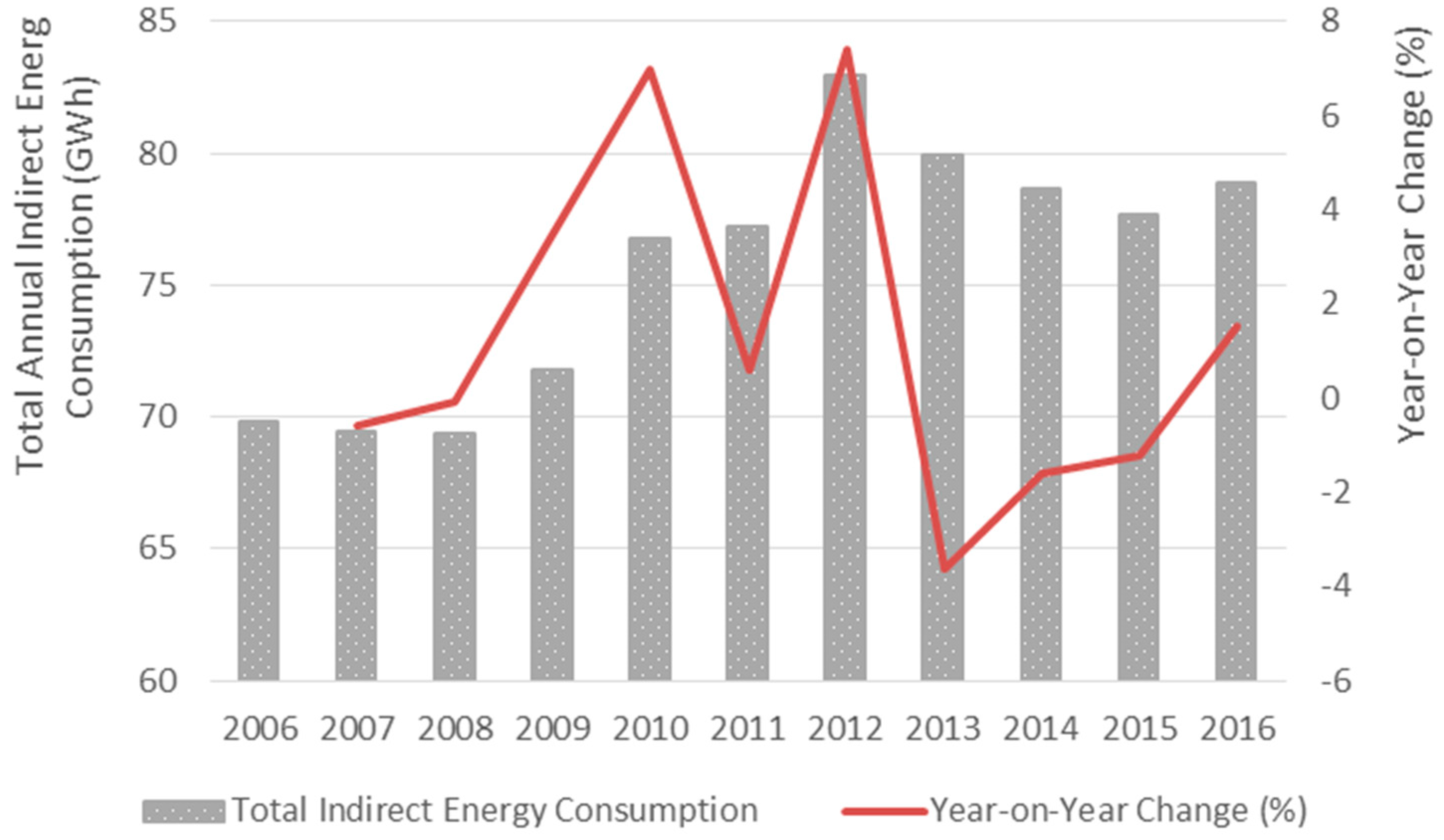
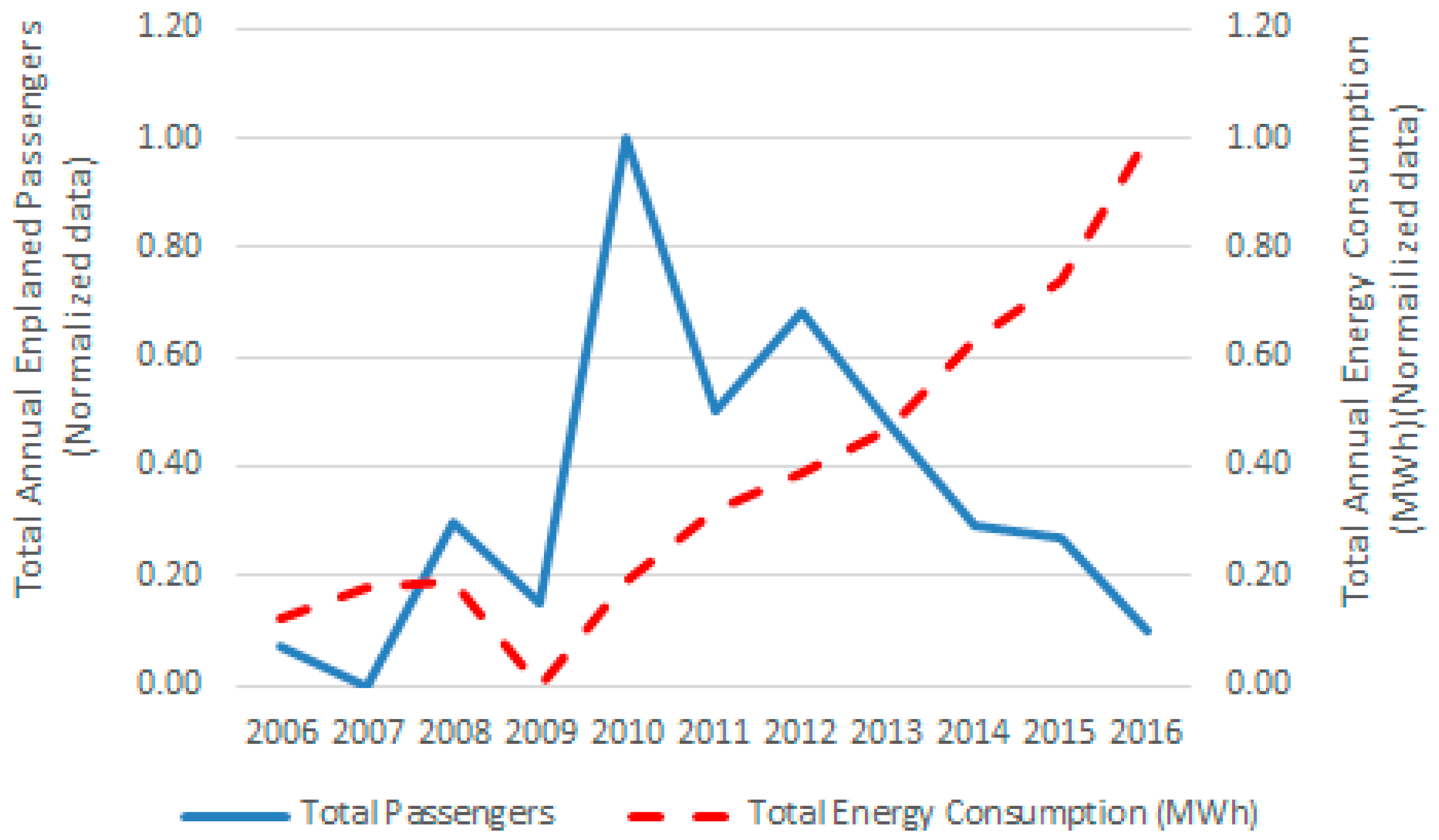
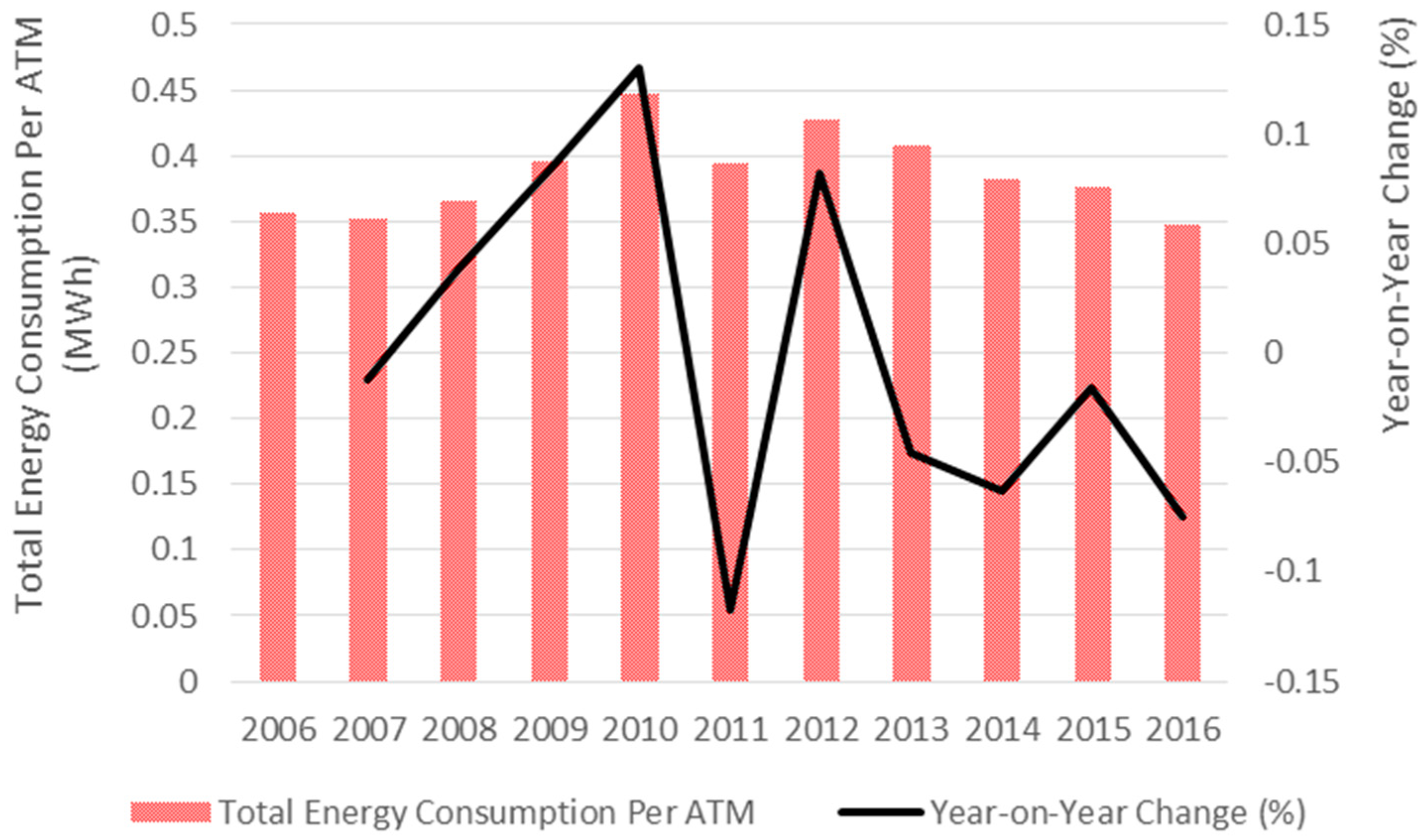
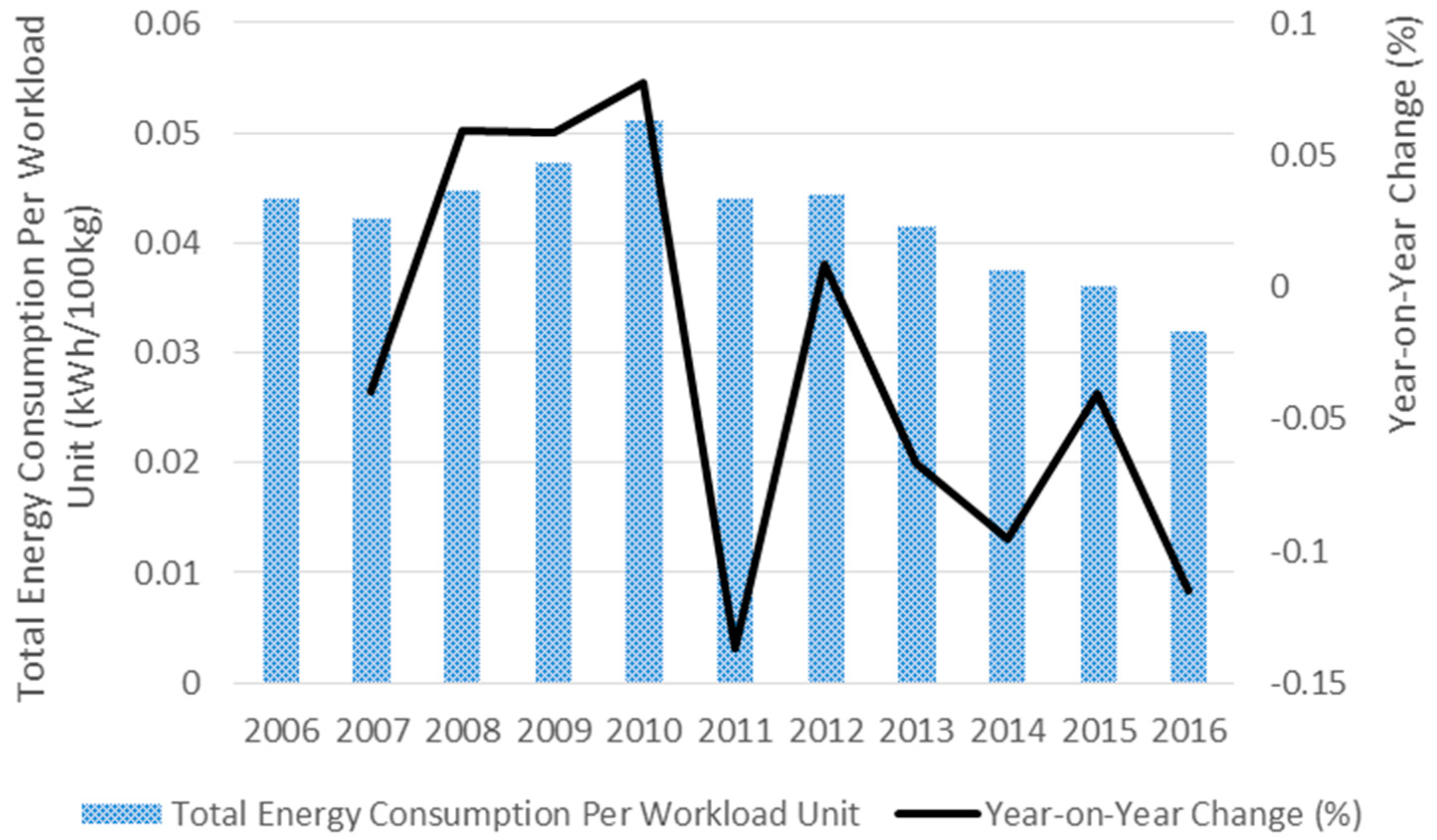

| Stakeholder | Energy Requirements |
|---|---|
| Airport Authority | Provision of terminal(s) power, terminal and facilities lighting, air conditioning (cooling and heating), car park lighting, power for baggage systems |
| Airlines | Power for office air conditioning, IT systems, and lighting |
| Airport Tenants and Concessionaires | Power for office air conditioning, IT systems, and office/terminal lighting |
| Car Rental Firms | Power for office cooling and heating, IT systems, and vehicle washing facilities |
| Cargo Terminal Operator 1 | Power for office air conditioning, cargo handling and IT systems, and office/terminal lighting |
| Eating and Dining Establishments | Power for office and cooking/refrigeration systems, lighting, and air conditioning |
| Freight Forwarders | Power for office air conditioning, IT systems, and office/terminal lighting |
| Government Agencies | Power for office air conditioning, IT systems, and lighting |
| Ground Handling Agents | Power for office air conditioning, IT systems, office/terminal lighting, and electric powered ground service equipment (GSE 2) |
| Ground Transportation (buses, etc.) | Power for office air conditioning and lighting |
| Hotels | Power for office, guest, and function rooms; air conditioning; lighting; catering and cleaning; and IT systems |
| Security Services | Power for office air conditioning, lighting, IT systems, and security screening equipment |
| Taxi Cab Holding Bays | Power for office air conditioning, lighting, signage, catering facilities, and IT systems |
| Stakeholder | Energy Requirements |
|---|---|
| Airport Authority | Provision of terminal(s), apron, taxiway, and runway lighting, air conditioning, electrical Power and air to aircraft gates, power to facilities, ground equipment, maintenance facilities, and baggage systems |
| Air Traffic Control | Power for office air conditioning, lighting, and ATC systems |
| Aircraft Maintenance Firms | Power for office air conditioning, IT systems, and lighting |
| Airlines | Power for office air conditioning, IT systems, lighting, and fuel handling systems |
| Airport Fuel Farm and Suppliers | Power for office air conditioning, IT systems, and lighting |
| Airport Tenants & Concessionaires | Power for office air conditioning, cargo handling and IT systems, and office/terminal lighting |
| Cargo Terminal Operator | Power for office air conditioning, cargo handling and IT systems, and office/terminal lighting |
| Fixed Base Operator (FBO) | Power for office and cooking/refrigeration systems, lighting, and air conditioning |
| Flight Catering Centers | Power for office air conditioning, IT systems, and lighting |
| General Aviation/Business Jet Center | Power for office air conditioning, IT systems, and lighting |
| Government Agencies | Power for office air conditioning, IT systems, GSE, and lighting |
| Ground Sservice Equipment (GSE) Maintenance Firms | Power for office air conditioning, IT systems, and lighting |
| Ground Handling Agents | Power for office air conditioning, aircraft handling and IT systems, and office/terminal lighting |
| Scope 1 | Unit | 2012 | 2013 | 2014 | 2015 | 2016 |
|---|---|---|---|---|---|---|
| Petrol | tonnes | 27 | 23.5 | 19 | 24 | 27 |
| Diesel | tonnes | 1809 | 1809 | 1852 | 1946 | 1939 |
| Fuel oil | tonnes | 0 | 0 | 0 | 0 | 283 |
| Natural gas for vehicles | tonnes | 0 | 0 | 0 | 8 | 10 |
| Natural gas | tonnes | 2441 | 2282 | 1085 | 959 | 1038 |
| Scope 2 | Unit | 2012 | 2013 | 2014 | 2015 | 2016 |
|---|---|---|---|---|---|---|
| Power | tonnes | 26,278 | 23,476 | 24,524 | 23,686 | 23,961 |
| District heating | tonnes | 3016 | 3027 | 2564 | 2459 | 2380 |
| Scope 2 | Unit | 2012 | 2013 | 2014 | 2015 | 2016 |
|---|---|---|---|---|---|---|
| Power | passenger traffic WLU (g) | 11 | 10 | 10 | 9 | 8 |
| District heating | passenger traffic WLU (g) | 13 | 13 | 10 | 9 | 8 |
| Scope 3 | Unit | 2012 | 2013 | 2014 | 2015 | 2016 |
|---|---|---|---|---|---|---|
| District heating/electricity/natural gas | tonnes | 27,707 | 24,398 | 24,387 | 23,597 | 25,096 |
| Year | Energy Saved (MWh) | Year-on-Year Change in Energy Saved (%) |
|---|---|---|
| 2009 | 678 | 0 |
| 2010 | 3586 | 428.9 |
| 2011 | 2716 | −24.26 |
| 2012 | 3082 | 13.47 |
| 2013 | 3608 | 17.06 |
| 2014 | 3273 | −9.28 |
| 2015 | 5675 | 73.38 |
| 2016 | 4588 | −19.15 |
© 2018 by the authors. Licensee MDPI, Basel, Switzerland. This article is an open access article distributed under the terms and conditions of the Creative Commons Attribution (CC BY) license (http://creativecommons.org/licenses/by/4.0/).
Share and Cite
Baxter, G.; Srisaeng, P.; Wild, G. An Assessment of Airport Sustainability, Part 2—Energy Management at Copenhagen Airport. Resources 2018, 7, 32. https://doi.org/10.3390/resources7020032
Baxter G, Srisaeng P, Wild G. An Assessment of Airport Sustainability, Part 2—Energy Management at Copenhagen Airport. Resources. 2018; 7(2):32. https://doi.org/10.3390/resources7020032
Chicago/Turabian StyleBaxter, Glenn, Panarat Srisaeng, and Graham Wild. 2018. "An Assessment of Airport Sustainability, Part 2—Energy Management at Copenhagen Airport" Resources 7, no. 2: 32. https://doi.org/10.3390/resources7020032





